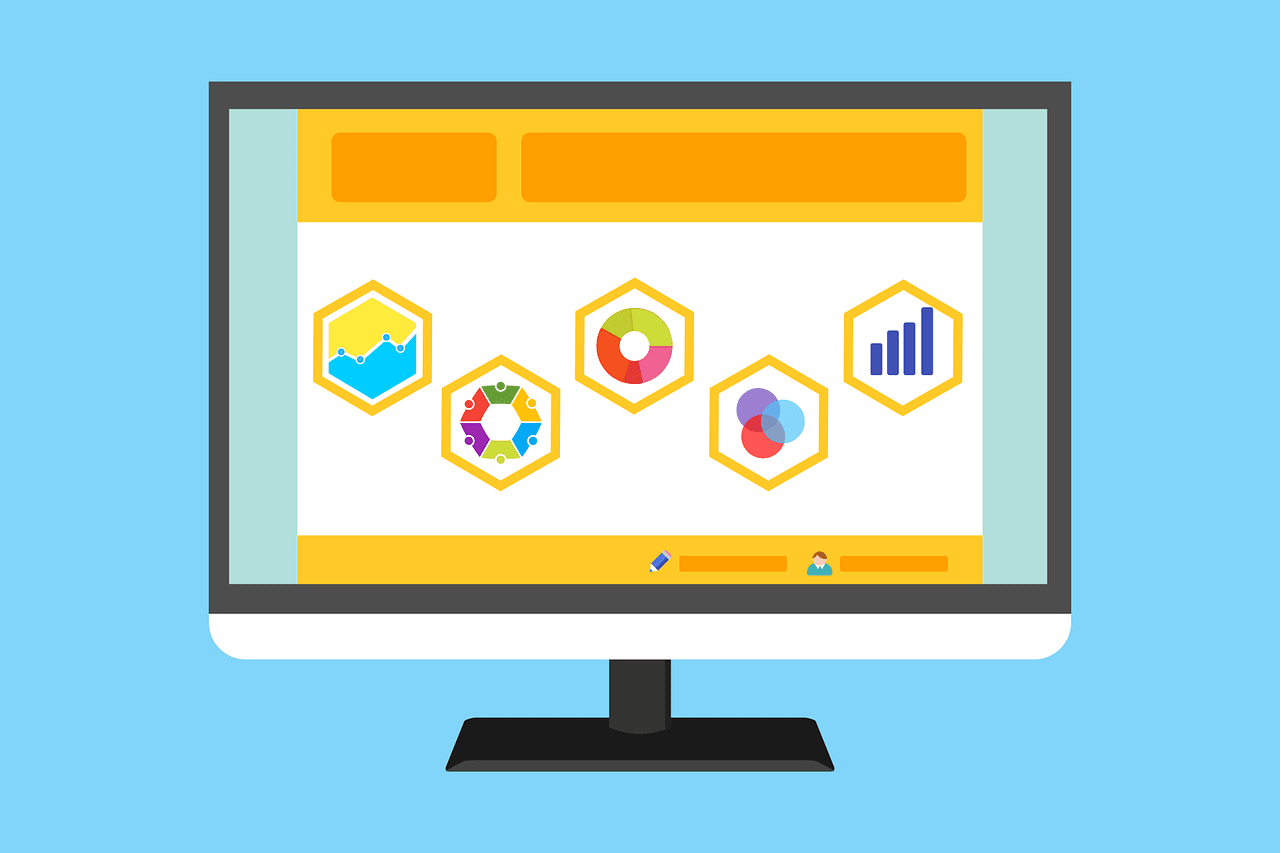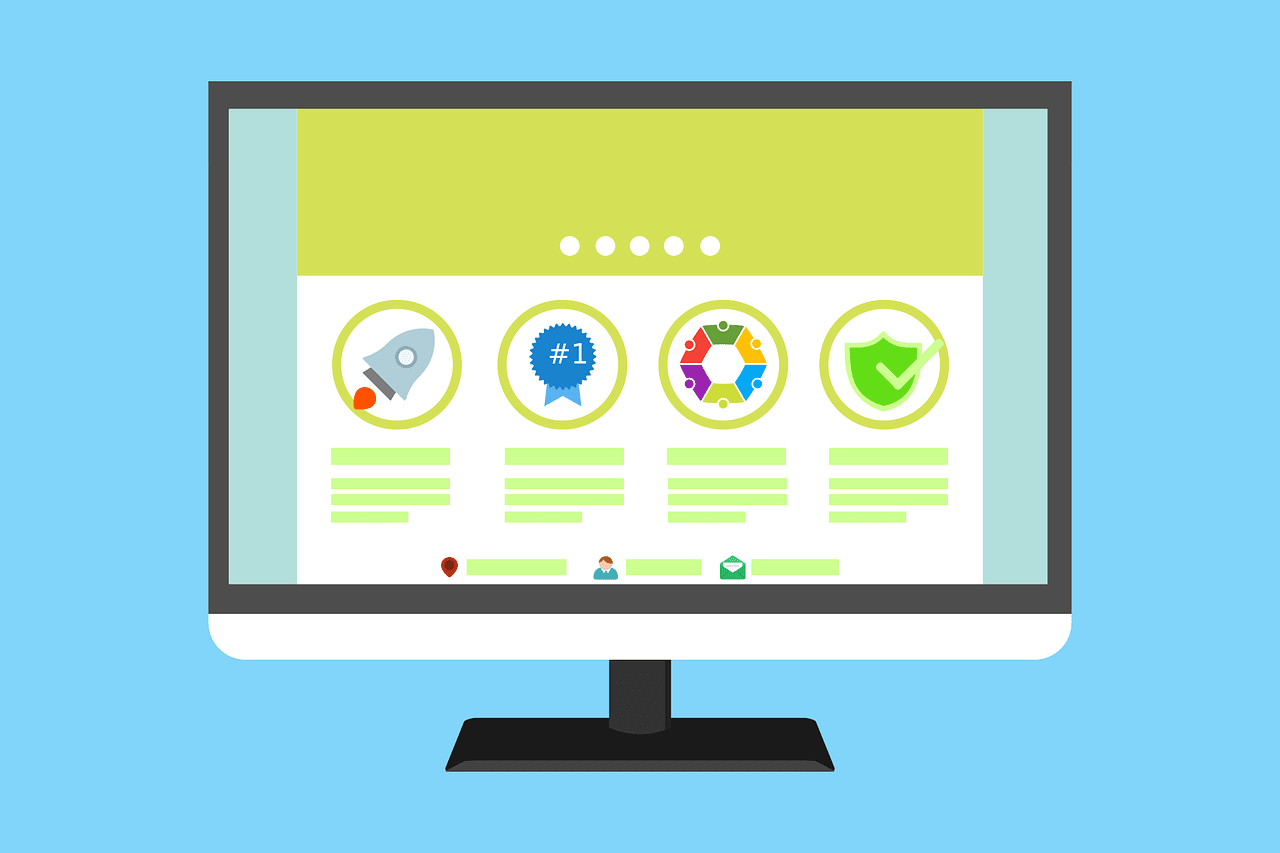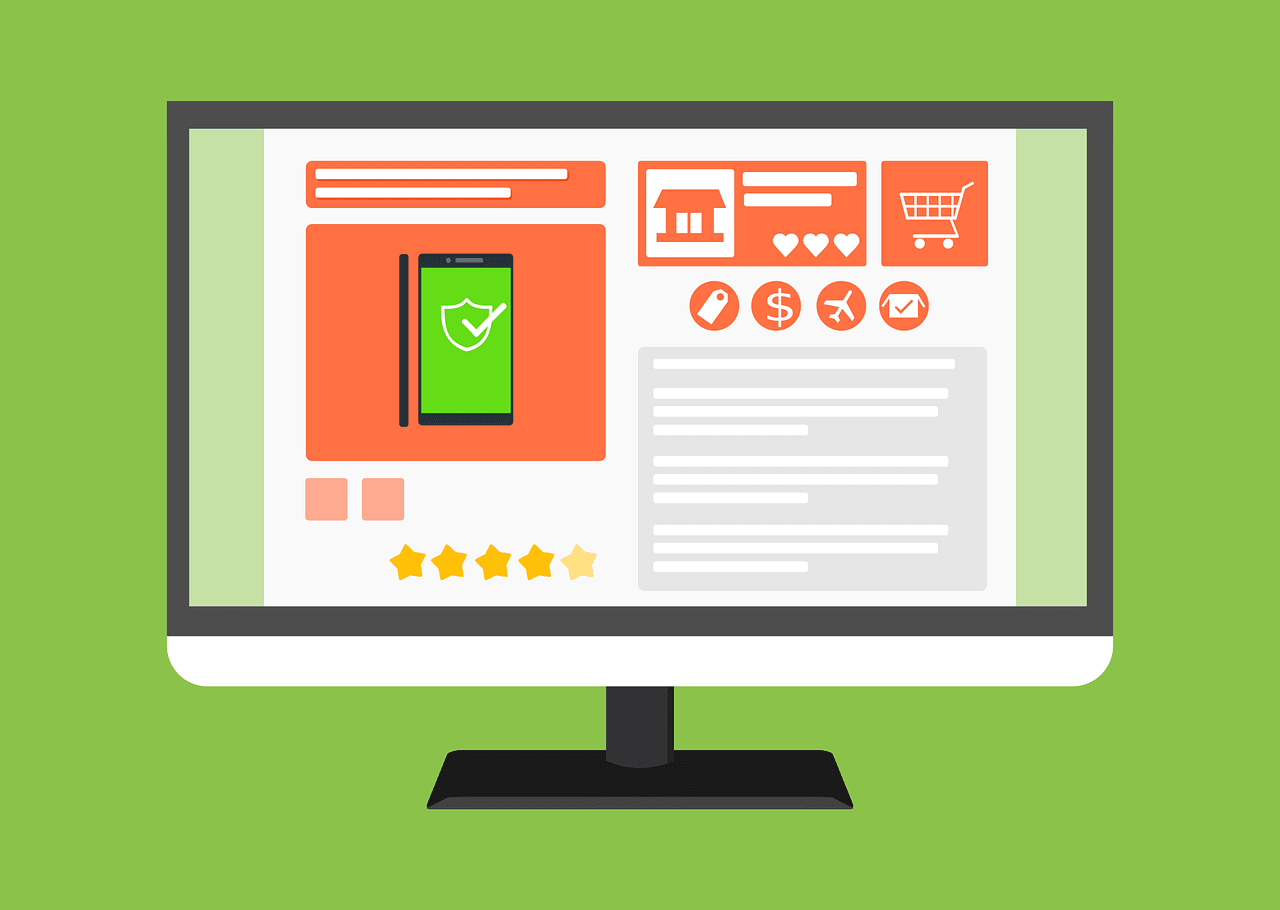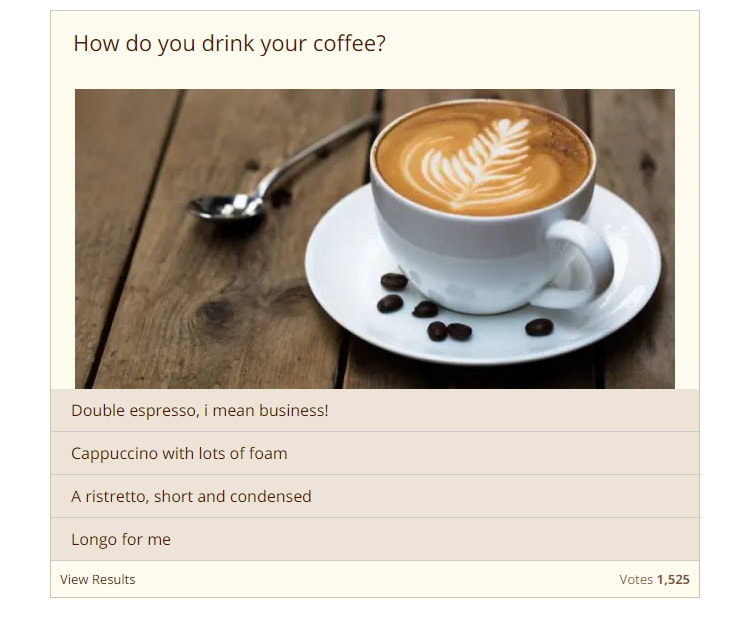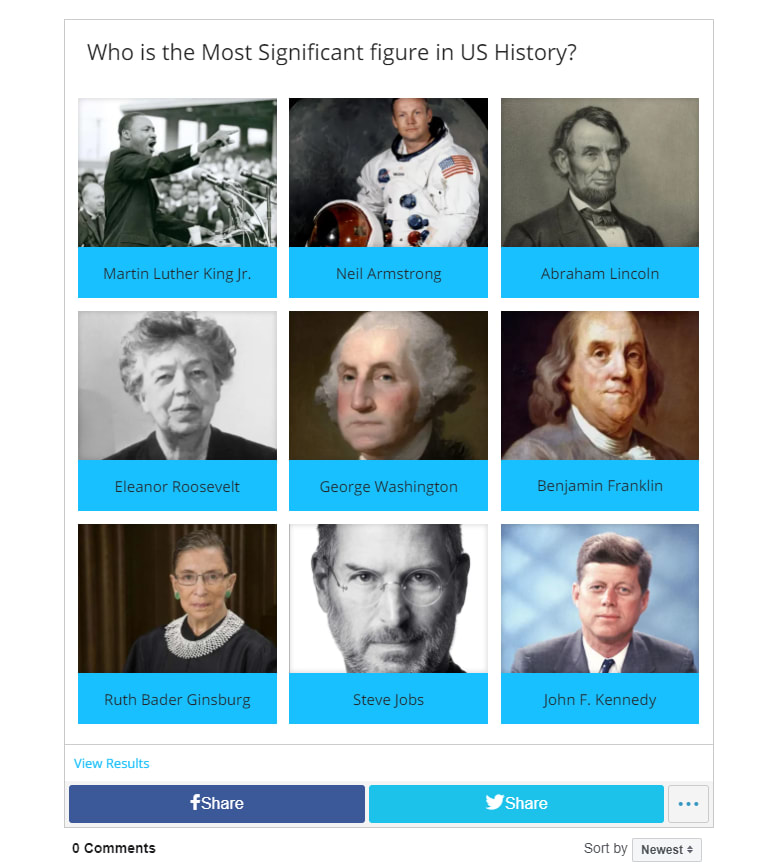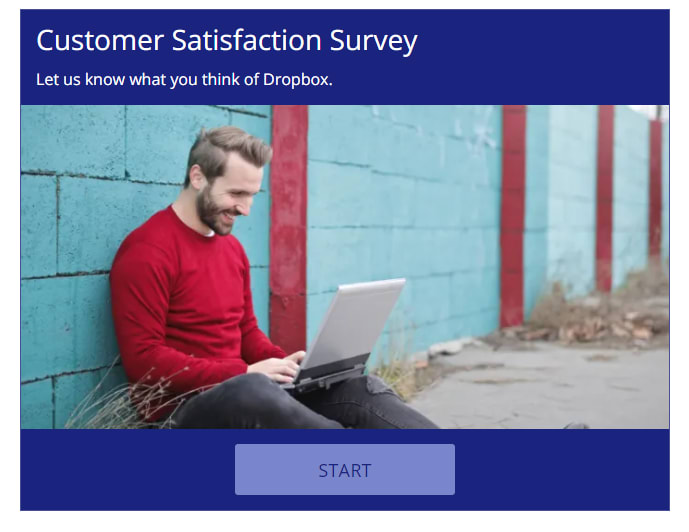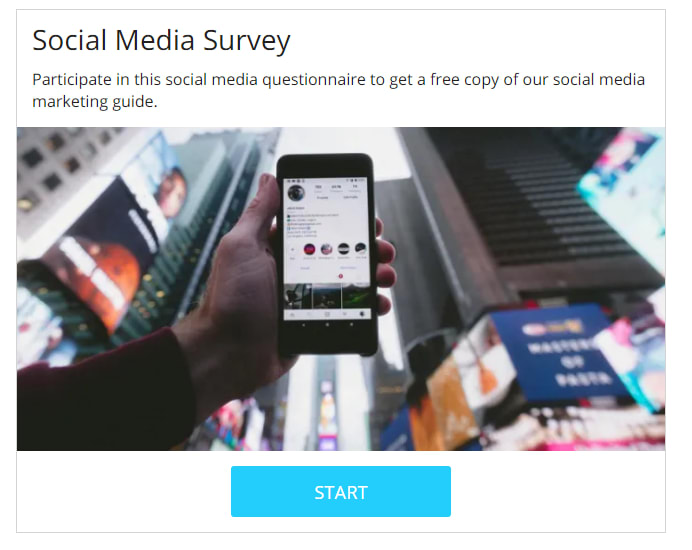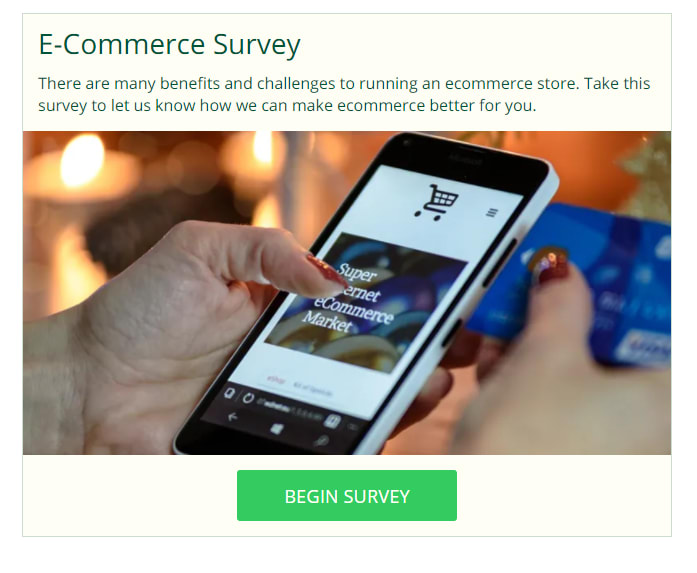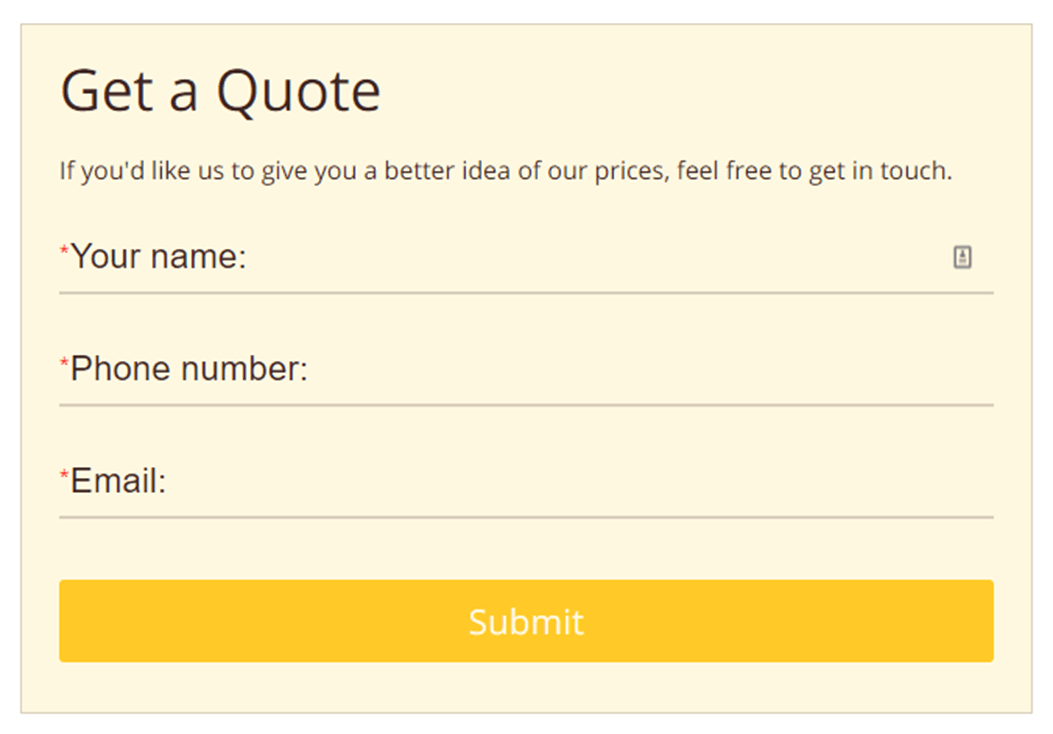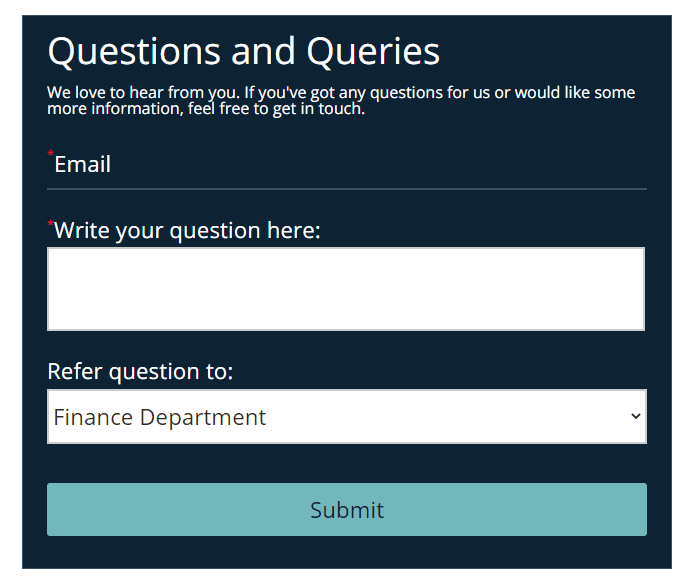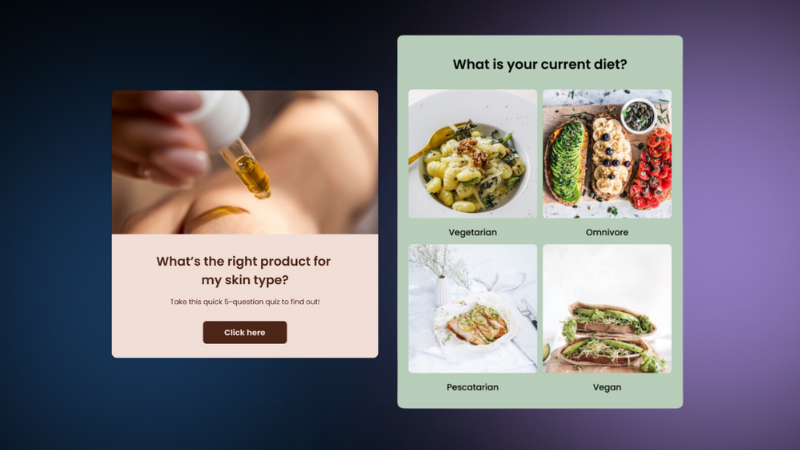20 Interactive Marketing Examples to Boost Engagement
It’s time to learn about interactive marketing.
Most marketing teams know how valuable content can be.
The right material educates your audience, shows thought leadership, and differentiates your company.
However, there are different types of content marketing out there.
Some of the best types of content marketing methods invite your audience to directly interact with your brand, and they can be easily built using online tools such as a quiz maker, a poll maker, and a survey maker.
Why is that important?
The gains (ROI) of interactive content are 2 times greater than those for static content according to this DemandGen report.
In a world of content overload, interactive gives your audience something different. It cuts through the noise to earn your audience’s attention.
So, how do you master the interactive content landscape?
What is Interactive Marketing (and Why Does It Matter)?
Interactive marketing is an advertising practice that focuses on the actions of a customer.
With interactive marketing, you invite clients into a two-way experience. Interactive marketing involves reacting to client actions and providing experiences that meet their expectations.
Rather than just presenting information, you pull your audience into an experience with your business. This might involve asking prospects to take a quiz or having them click through a slideshow.
In today’s competitive business landscape, customers differentiate between brands based on the experiences they have to offer. Unfortunately, it’s difficult for a company to convey a sense of what to expect from these experiences before a purchase.
Interactive content provides your audience with a taster of what a meaningful moment with your brand might feel like. If your interactive content is valuable, interesting, and easy to use, then your clients are more likely to believe the rest of your services will share the same components.
Let’s take a look at some of the stats around interactive marketing:
- 73% of business leaders believe that blending traditional content with interactive marketing enhances the retention of a company’s message. (Source: Content Marketing Institute)
- 77% of advertising pros agree that interactive marketing has a reusable value, which leads to multiple exposures and repeat visitors. (Source: Content Marketing Institute)
- 88% of marketers say that around 10% of their content will evolve to become interactive in the next 2 years. (Source: DemandGen report)
The Benefits of Interactive Marketing
Interactive content is a powerful tool for overcoming the challenges that may prevent a purchase.
45% of B2B buyers actually say that interactive content is one of their preferred times of content.
If you’re looking for a way to engage your audience, interactive marketing is it.
This content prompts users to participate actively in experiences, rather than just passively witnessing content. Some of the biggest benefits include:
Boosted engagement and social sharing
Interactive content marketing is one of the most engaging content types on the market. This means that people spend more time with your content. If people have fun with your content, they’ll be more likely to share it with others.
Personalized marketing converts better
Interactive marketing customizes the user journey. This is done by asking users to share their preferences, needs, and demographic information. In return for participation, users get a more personal and meaningful set of facts.
Qualify Leads
The easiest way to collect qualified leads is by adding a conversational lead form to your interactive experience instead of a static form. Conversational lead forms mimic natural, human conversation, making the experience less tedious for users and helping you get more in-depth information. This is particularly effective when used in quizzes and surveys. Plus, your sales team can use the insights gathered through call center software to improve strategies and follow-ups.
Fast and easy to create
Many of the best interactive marketing solutions, like quizzes and polls, are actually extremely easy to create. Some of these solutions take less time to make than static articles. You can find various templates to help you accelerate your journey and get results faster!
Unique and memorable
Interactive experiences are a brilliant chance to show your audience what makes your business special. As the marketplace grows increasingly cluttered, this is your opportunity to be different.
Amazing Interactive Marketing Examples
The great thing about interactive marketing is that it’s diverse.
You don’t have to create the same content as your competitors. It’s actually much better for you to get creative with the experiences that you can provide.
This might even mean that you invest in a number of interactive content ideas. These might include calculators, apps, and immersive animated timelines.
Here are just some of the most common kinds of interactive marketing, and some examples to inspire you.
Interactive Quizzes
In a recent HubSpot poll, 15% of consumers said that they preferred to check out Stories on Instagram with polling or quizzing features. People like learning things that seem tailored to them.
Interactive quizzes are some of the most engaging and viral forms of interactive content. These solutions are also some of the easiest for today’s businesses to create.
Thanks to a wide selection of online quiz templates and examples, any business can create a quiz that delights and engages its audience. Before you get started, here are a few things to think about:
- Where’s the value? What kind of value will your quiz provide to your customer? Is it going to teach them more about their personality, so they can share insights into themselves on social media? Will it provide them with handy information about a problem they’re having?
- What kind of questions? How complex or simple should the quiz be? Do you want questions that allow your audience to give qualitative feedback (written answers)? Is it better to keep your quizzes simple with yes or no responses?
- How can you make it more engaging? Aside from asking the right questions in the right way, what will make your quiz more appealing? Can you use images and videos to break up the questions and keep your prospects entertained?
Some examples of types of interactive quizzes you can consider include:
1. Trivia Quizzes
Trivia quizzes are a fun way to educate your audience and make them feel great at the same time. With a trivia quiz, you can offer useful information and showcase your knowledge about a subject. However, you also give your customers a chance to prove their knowledge and show off to their friends. We all like feeling smart!
Remember, Trivia quizzes are a chance to showcase your knowledge, but they should also include some easier questions that give your clients a boost too.
2. Personality Quizzes
Personality quizzes are a great way to create a more intimate connection with your target audience. They offer a chance to show that you understand your customers and that you know how to solve their most common problems.
People love sharing the results of personality quizzes on social media because they offer an insight into their unique character. At the same time, these quizzes will also give you a chance to gather helpful information for your buyer personas.
3. Diagnostic Quizzes
Diagnostic quizzes are excellent for giving your customers and prospects answers to pressing questions. These incredible tools are fantastic for showing your audience that you’re a thought leader in your space. They also indicate that because you know how to diagnose their problem, you also know how to fix those issues.
When running a diagnostic quiz, make sure that you don’t ask for more information than your audience would be comfortable giving at this early stage in the buyer journey.
4. Assessment quiz
An assessment quiz is something that your customers or users take to determine how well they’re progressing in a certain aspect of their life. For instance, you might have an assessment quiz on an eLearning website that tells students whether they’re ready to face their final exam or not.
Assessment quizzes can even be helpful for HR teams and employers in search of great candidates for a new position. Using a tool like this, organizations can determine just how savvy an applicant might be in their field before they have to waste time on a face-to-face interview. An assessment quiz could be a time and money-saving part of your hiring process.
On the other hand, you might just use these quizzes as a way for people to confirm their expertise in a certain area and share a new accolade with their friends.
5. Scored quiz
Scored quizzes are similar to assessment quizzes, in that they give your audience a chance to test their knowledge and get an insight into just how accomplished they are. However, while assessment quizzes focus more on allowing people to prove their skills, scored options are intended for people who might be curious about their expertise in a certain area.
For instance, if someone’s scrolling through Facebook and they see a quiz entitled “How much do you know about Health, Food, and Nutrition?” they might click on the link just because they’re not sure how much they really know. People go into these scored experiences expecting partially to prove their skills, and partially to learn something new.
6. Product Selector Quiz
One of the best quiz types for today’s online sellers is the product selector quiz. As you’d probably guess from the name, these assessments help people to make important decisions about what to buy. For instance, if you know that mother’s day is coming up soon, but you don’t know what the best gift for your mom would be, then you might take a quiz to help you figure it out.
Usually, these quizzes ask basic, but insightful questions about the person, or the individual who will be receiving the item. The things that the user reveals as they’re answering the questions on your quiz will guide them towards a product or service that’s suitable for them.
Product selector quizzes are a fun way to make sure that you’re suggesting the most relevant solutions for your target audience.
Interactive Polls
Polls are another excellent form of interactive marketing – generally intended for the top stages of the sales funnel. Although quizzes are a fantastic way to connect with your audience, they can sometimes ask for too much information, too quickly.
If your prospects haven’t developed enough of a relationship with your brand yet, they may not feel comfortable giving you any significant details about themselves.
Polls are a much easier option to interact with. All your user needs to do is click on a button to make their opinion heard.
The great thing about polls is that they give your audience a chance to share what matters to them. At the same time, polls can help your audience to feel an affinity with the rest of your brand community – particularly if they share the same opinions.
Polls make it much easier for your companies to answer important questions. For instance, you could learn whether your audience likes your new website or preferred the old design.
Polls come in a variety of styles to encourage audience engagement, such as:
1. Standard layout polls
The most obvious, and simple poll is the standard voting poll, which you can easily build with this online voting tool. This interactive marketing method makes it easy to collect information from your audience, on things they’re passionate about. A single answer poll asks your audience to choose one of a series of responses to a question.
The great thing about this straightforward approach is that it’s very easy to track responses and collect insights for your business.
2. Video Polls
If you’re looking for an extra dose of engagement for your polls, video is an excellent way to access that. Video instantly grabs attention with attractive sounds and visuals. What’s more, unlike pictures, videos are much more effective at conveying complex information in an easy-to-absorb format.
For instance, rather than asking the customers of a fashion show to choose their favorite outfit based on a single picture, ask them to choose based on a series of catwalk-style videos that show the clothes from all angles.
3. Image polls
Sometimes, it’s easier to get customers engaged when you include visuals in your interactive marketing. Visual content grabs attention fast and makes the content look more appealing. Visual content also has a higher chance of shares on social media.
Remember, when using images in your polls, be careful about your picture choices. Your visuals need to be of high quality to earn audience attention. You’ll also need to avoid using anything that’s already got copyright protection.
Interactive Surveys
Quizzes and surveys might seem like the same thing.
However, there’s a big difference here.
Surveys are about analyzing a person’s knowledge or perspectives at a certain time. With surveys, you can see how well your students are doing in their learning process.
Alternatively, you could use a survey to see how a client feels about your new software, and whether it’s easy enough for them to grasp.
Sometimes, surveys can be a fantastic tool for gaining feedback that pushes your business in the right direction. For instance, a survey into hiring and onboarding processes might mean that you can determine whether you need to change the way you add new staff members to your team.
With today’s digital technology, business leaders can create surveys either from scratch or with a survey maker. Remember, when designing your survey:
- Use direct, simple language
- Be specific about what you need to know
- Break larger ideas down into as many questions as possible
- Avoid using leading questions
- Ask only one question at a time – don’t make your queries too complicated
Here are some great examples of the kinds of surveys you can try.
1. The Customer Satisfaction Survey
Customer satisfaction surveys are some of the most important assessments that today’s companies can run. Ultimately, the only way to ensure that you’re running a successful business is to listen to the feedback of your audience. A customer satisfaction survey tells you everything you need to know about what your clients love, and what you may need to change.
The key to success with customer satisfaction surveys is being as direct and simple as possible. Start by asking your clients to rate you on a scale of one to five for certain things, like response times, or empathy. If you’re working with customers that know your business well, you can ask for more qualitative feedback, with questions like: “How could we give you a better service?”
2. Social Media Survey
A social media survey is simple enough. With this kind of assessment, you essentially follow the standard survey format. That means asking your audience basic questions about something simple – like your new product, or your recent customer service efforts. The biggest difference with social media surveys is that they’re delivered via social formats.
Aside from choosing the right platform to host your social media survey on, the biggest decision you’ll need to make is what kind of questions do you want to ask? Should your survey be serious and informative, or do you need something friendly and informal?
3. eCommerce Survey
An eCommerce Survey is one of the final stages of many modern customer buying journeys. If you want to deliver the best experiences to your target audience, then you need to ensure you’re engaging and interacting with them in a positive way from start to finish.
Many business owners forget about the part “after the sale”, when they should nurture their buyers and make sure they feel satisfied. However, an eCommerce survey allows you to check that you’re doing everything right. You can ask your audience what they think about your product, the purchasing journey, and more. Features like a seamless checkout, high-quality product descriptions, and shoppable images that let customers view products in real-life settings and purchase directly from visuals can significantly enhance the shopping experience. This interaction may even lead to future sales.
Interactive Forms
Forms have always been a powerful part of the relationship between a company and its customers. In the age of digital commerce, forms are critical for gathering client information. With an interactive form maker, you can build a form that engages your customers and increases the probability of them becoming dedicated repeat clients. Why? because you get their email addresses. Once you have this valuable contact detail, you can nurture your customers via conversations.
Like other kinds of interactive marketing, forms are excellent for collecting crucial information from users.
It’s easy to create a form from scratch using one of the various templates that today’s platforms offer. However, you can also find templates that improve your chances of delivering the right customer experience.
The important thing to remember about forms is that although they’re there to collect information, you shouldn’t ask too many questions at once. A complex form packed full of questions could easily scare a customer off if they don’t feel comfortable with your brand yet.
Here are some handy form examples to inspire you.
1. Get a Quote
If you’re running a business where you offer a professional service to customers, then you might not be able to give all your pricing details on a single page. Accountants, lawyers, and other professionals all base their pricing structure on a selection of important things, such as time and unique requirements.
Since pricing is one of the first things any customer will need to consider when they’re deciding whether to buy something from a company, a quote form is a valuable tool. Therefore, using the right quote software is essential.
These tools ensure that your audience can quickly and easily demonstrate their interest in your service. All they need to do is give a name and email address to get started.
2. Questions and Queries
One of the best things you can do to ensure that you give your audience an amazing experience on your website is to answer as many questions as possible for them. Some companies do this by creating blog and article content, while others design FAQ pages.
While both of those options are excellent for giving valuable information to your audience, it’s difficult to know for certain if you’ve answered every question. There’s always a risk that your customers might have a query that you haven’t thought of. A questions and queries form gives them a quick way to get in touch with their concerns.
3. Feedback forms
One of the things that make forms so valuable in the current landscape, is that they allow companies to collect insights from their audience. Feedback forms are a fantastic opportunity for businesses of all sizes to speak to their customers and find out what they need to do differently.
With a feedback form, you can ask your clients about a particular aspect of your customer service, product, or solution. On the other hand, you could just ask for a general rating of your services, and learn more about which direction you need to take.
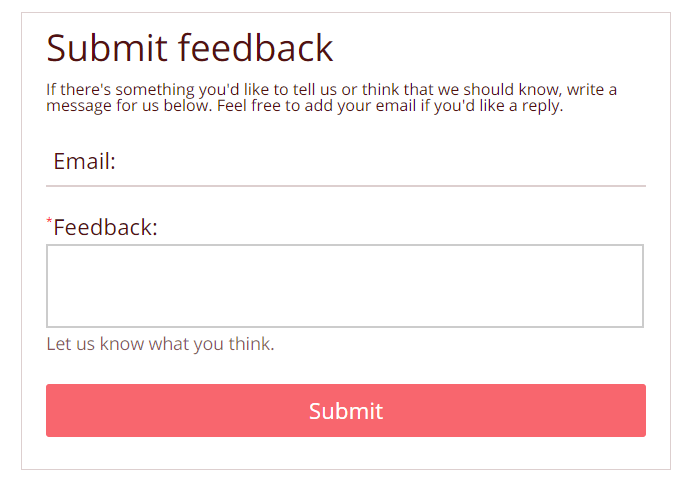
Remember, try not to push your audience into giving a specific answer to a question with a feedback form. Questions like “Do you like this service?” with yes or no checkboxes won’t give you any room to grow.
Interactive Slideshows
As we mentioned above, interactive marketing is often more effective when visual elements are involved. It’s much easier for customers to use information to make decisions if they have pictures and videos for added context.
Unfortunately, some companies don’t have the skill or budget to invest in video creation. Using video templates can be a cost-effective way to create engaging visual content without requiring a lot of resources. These templates allow organizations to easily incorporate videos into their presentations, helping to clarify complex information for their audience. An interactive slideshow with engaging videos offers a perfect balance, combining the engagement of video with the structured flow of slides.
Slideshows are a popular way to share information without having to rely too heavily on a single image or a video. You can convey a simple message through a series of pictures and small snippets of text. Here are some great examples of slideshows to inspire you.
1. Informative slideshows
Because they’re so effective at conveying information, slideshows are excellent when you need to share complex details with an audience quickly. An informative slideshow refines large amounts of complicated information into short chunks of data.
Used correctly, this kind of interactive marketing does two things. First, it shows your audience that you understand your industry and have plenty of thoughtful insights to offer. Secondly, it gives your customers value, so they’re more likely to come back to your site in the future.
2. Product slideshows
Another way to add slideshows into your interactive marketing is to use them as a way of showcasing some of your best-selling products. There’s a good chance that you’ll want to show off your new items to your audience on a regular basis. However, just having a page full of static product descriptions isn’t always the most appealing route.
A slide show allows your audience to quickly flip through some of your top-selling items and decide whether they want to interact with you further. Remember, when using product slideshows, ensure that each picture links to a full product sales page.
3. Entertainment slideshows
Sometimes, interactive marketing doesn’t just have to be something you use directly to make a sale. A slideshow can also be an excellent way to entertain your customers and keep them on your website for longer. The more your clients have a reason to come back to your site, the more chances you have to make a successful sale.
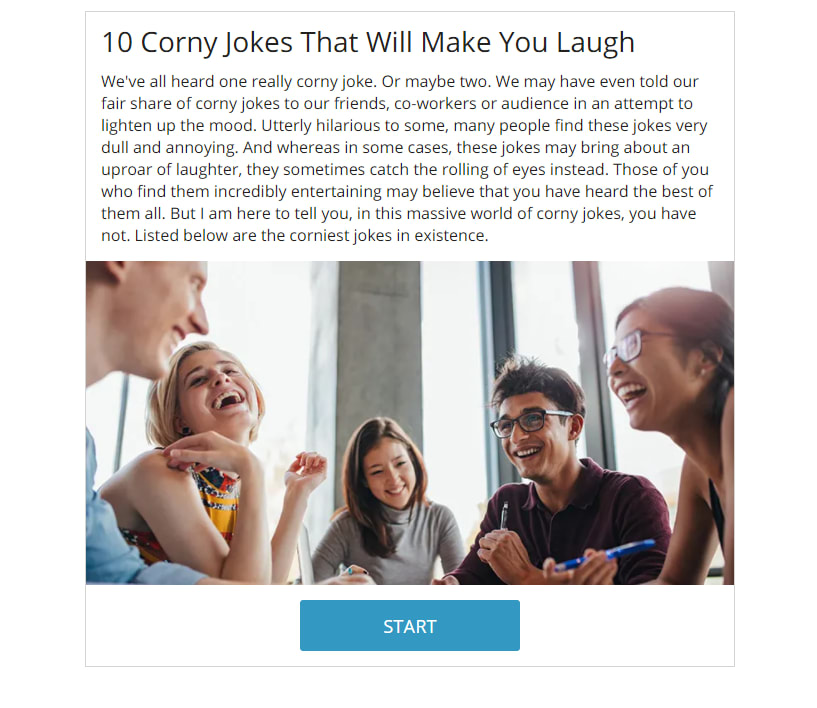
Consider experimenting with some trending topics that you know your audience enjoys. For instance, you could share some quick jokes, or just offer your opinion on something that you know people might be talking about right now.
Interactive Visuals
The term “interactive visuals” covers a wide range of elements that can appear on a website, from clickable infographics that trigger animations to zoomable images and step-by-step visual guides. Some companies take things even further by working with designers and developers to build fully-fledged tools and calculators that respond to user input.
As visual content becomes more AI-driven, staying aware of emerging design trends can help keep things fresh and relevant. Global interest in AI-generated imagery has surged over the past five years, highlighting the growing role of generative tools in creative work. Insights from recent AI art trends can offer inspiration for shaping the look and feel of your next interactive project.
Let’s explore some fundamental examples of interactive visuals you can include on your website, app, or any other digital environment.
1. Interactive calculators and tools
Interactive calculators and tools require more work than any other form of interactive marketing. Usually, unlike with a standard poll or survey, you’ll need a dedicated developer to make your calculators and tools work correctly. However, while these solutions take more time and focus, they can also lead to higher levels of engagement and return on investment.
The Hubspot Site Grader is a common example of an interactive tool or calculator in the marketing world. You enter your website and your email address, and the proprietary algorithm assesses your website for you. This obviously requires a lot more technical knowledge than a basic automated survey.
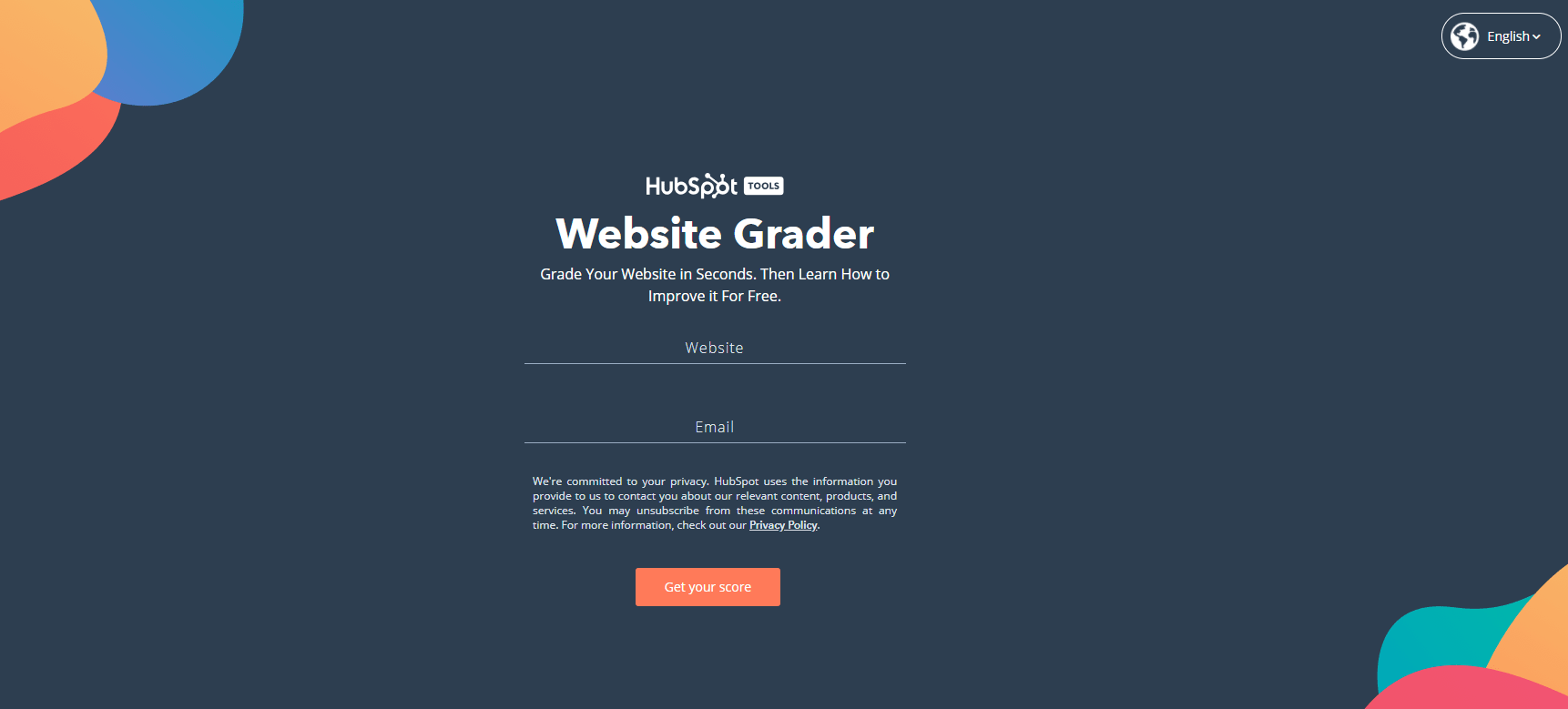
Another example is the interactive calculator from the New York Times, which allows subscribers to calculate whether their tax bills will go up or down. Although calculators aren’t always as socially viral as other forms of interactive marketing, they do drive a lot of quality backlinks and engagement.
2. Gamification elements
One final example of visual interactive marketing comes in the form of gamification. This concept has been around for some time now. Gamification is all about using the concept of competition to attract engagement.
Another example of gamification is putting achievements into your website or experimenting with secret Easter eggs. The Zurb website hides little cow graphics all over the website, on different pages. You can click on those cows to gradually earn an achievement. There’s also a page where you can track the cows you’ve found.
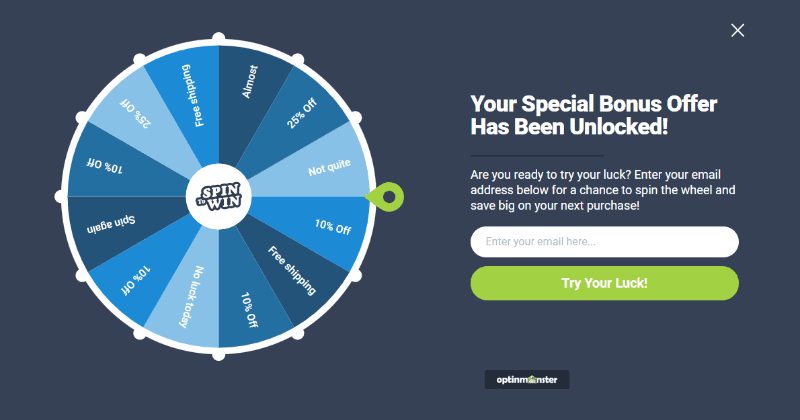
A simple visual element like this might not seem important at first. However, the experience works to convince users that they should skim through or read more pages on the site before going anywhere else. Even sites like LinkedIn use gamification elements. When you log into your account as a new user, LinkedIn tells you how complete your profile is, and what you need to do to achieve your next goal. You might implement similar strategies, like adding a spin-the-wheel discount or embedding interactive features such as pop-up quizzes and videos, which can be easily set up using various website plugins.
When to Start Using Interactive Marketing
Making your website come to life with interactive marketing is a fantastic way to drive new business and connect with your customers. However, it’s not always easy to figure out when you should take this exciting step.
Rushing into an interactive marketing strategy could mean that you end up with something that doesn’t really work for you or your consumers. Here are a few points to think about when deciding whether interactive content is right for you.
- Do you have a good reason to use interactive marketing? Interactive content is just like any other content on your website or app – it needs to serve a purpose. If you don’t have a reason to create the content, then don’t waste your time or money. Inappropriate quizzes, surveys, and other experiences that don’t mesh with your brand identity could drive people away.
- Do you have the right resources? Creating interactive content can be simple, or complicated, depending on what you want to do. If you’re designing a new app or tool, you’ll need a professional developer. If you’re just creating a quiz, then you could use an online template and keep costs low.
- Do you have something unique to offer? Is the marketing strategy going to make your business stand out in a positive way? Do you know exactly what kind of value you’re going to provide, and which audience you’re targeting?

Tips for Making Your Interactive Marketing Work
Once you decide that interactive marketing is right for you, the next step is to start creating. Excellent outcomes require careful strategizing and planning.
Here are the steps you’ll need to consider when building your interactive content campaign.
Step 1: Brainstorming
The first step in the successful development of any marketing strategy is creativity. Letting your ideas flow freely is important here. This could mean bringing multiple people together throughout your business, so you can access different points of view and unique skill sets.
Put anything that jumps to mind on the page, and don’t censor yourself too much. Some of the best ideas come from allowing yourself complete creative freedom. While you’re brainstorming, ask yourself:
- If you were a prospective customer, what would help you make a purchasing decision?
- Where is your website lacking in visuals and excitement?
- What can you do to make the user experience more interesting and immersive?
- What kind of information would you like to collect from your audience?
- How much time and budget are you willing to put into your interactive marketing?
Once you have your complete list of ideas, you can begin to narrow your options based on how much time you’re going to need to bring an idea to life, and the expenses involved. Remember, you can always make multiple kinds of interactive content if your budget supports this.

Step 2: The Creation Stage
Narrowing your options from the brainstorming step can take a while – don’t rush yourself.
Once you’ve got a great idea, create your interactive content. The focus here needs to be on making the marketing as useful and entertaining as possible. The benefit to your user needs to be obvious.
Balance is everything during the creative stage. If your interactive experience isn’t fun, people won’t use it. If you’re creating a quiz, adding humor and personality into the questions could be a brilliant way to make your business stand out.
However, there’s more to your content than entertainment value. Ideas need to be packed full of valuable and engaging information too. Here are some top tips to guide you.
- Research your audience first: You can only create amazing content if you first know who you’re speaking to. Research your audience and ensure you have an excellent set of user personas ready. This will guide you in choosing ideas that reflect your customer’s needs.
- Get specific: When asking questions in quizzes, or sharing information in slideshows, make sure you’re specific. For instance, you get a lot more information asking, “how many minutes does it take to complete [this task]?” compared to “does [this task] take a lot of time?”
- Demonstrate your tone of voice: Make interactive experiences more engaging by allowing your unique personality to shine through. For instance, rather than just asking people what their biggest management challenges are, ask “which management tasks make you want to throw your computer out of the window?”
Remember, aesthetics do matter too. Throwing a quick quiz together with PowerPoint won’t impress your audience. Your interactive marketing, just like the rest of your content, is a representation of your business. Work with the right professionals and templates to make it look incredible.
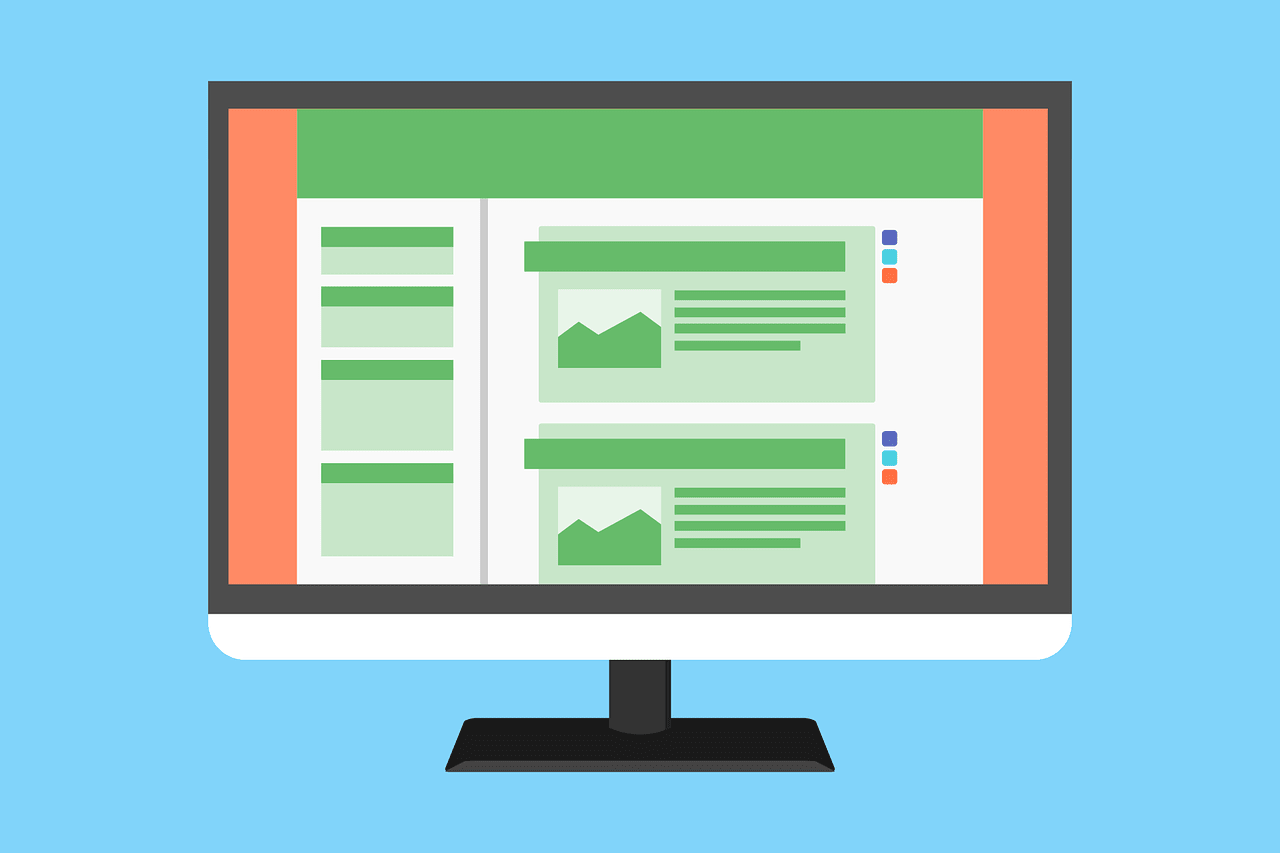
Step 3: Get Marketing
After creating your interactive content, you can’t just wait around and expect someone to find it. Just like the other elements of your website, interactive marketing requires proper promotion.
The more you talk about your content, the more people will see it.
Remember, encourage your followers to share links to your new creations on social media and send a link to your email list too. It might even be worth talking to some third-party companies and finding out whether you can use a guest post to drive people back to your site.
Step 4: Remember to test
Finally, remember that it’s important to learn from every piece of interactive marketing you produce.
You don’t need to constantly check your results every day but set a specific time period you should stick to. Every 30 days, go back to your metrics and find out what kind of engagement you’re getting.
Measuring the results of your marketing strategies will show whether your content is driving more leads. You’ll also learn more about the kind of customers that respond best to your company.
Look at things like average customer value, return customers, and conversion rates. These metrics will show you how well you’re connecting with your customers.
Mastering Interactive Content
As you’ve seen throughout this article, interactive marketing is a powerful tool.
Interactive content also comes in a variety of shapes and styles. Sometimes, your interactive marketing might involve something as simple as a basic quiz or survey.
Other times, you might want to experiment with gamification, slideshows, and video lists.
As the business world grows more competitive, interactive content is emerging as the wave of the future. Everywhere you look, companies are searching for new ways to connect with their customers.
The only question to answer now is, how are you going to take advantage of the trend?

